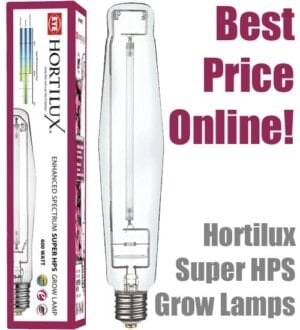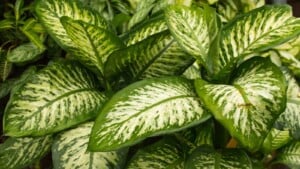Indoor plant lights let you shine a light where and when the sun don’t shine. They allow you to extend the growing season; have a year-round supply of fresh flowers, healthy vegetables and exotic herbs; as well as give your young seedlings a head start before you can plant them outside.
There are almost as many kinds of grow lights for sale as there are different light spectrums. Everything from a simple $5 incandescent lamp to a sophisticated commercial system using high intensity discharge (HID) lamps can help.
Here’s a rundown on what is available, how much it costs as well as the pro’s and con’s of different types of plant lighting.

GROW LIGHT KIT
Nanolux (1000W, 208v-240v)
These high-performance beauties offer dimmable settings and wireless control.
$536.50Learn moreAt Planet Natural we offer a large selection of high-intensity discharge (HID) lights, both metal halide (MH) bulbs and high pressure sodium (HPS) lamps. All have been manufactured using the latest technology and are designed to produce stronger plants and higher yields. Need advice? Visit our Indoor Gardening Blog for the latest tips and information.
Incandescent
Incandescent lamps lay at the low end of the pricing spectrum for plant lights. A good 150 watt bulb will only set you back about $5. You can get such bulbs from a local hardware store or a large nursery. An incandescent lamp can keep a small house plant growing, but isn’t necessarily your best bet for starting a large garden indoors.
Fluorescent
Until recently, fluorescent grow lights had too low an output and were too big and bulky to be of much use except as a grow light for seeds or seedlings. Generally fluorescents are a poor choice for flowering and budding plants because of their low lumen (brightness per unit of energy consumed), but they are a great source for herbs and other plants that don’t need a lot of light. Indoor gardeners most often use the four-foot size. You can purchase the two lamp “shop light” variety for under $40 at your local hardware or garden supply store.
There is big news on the fluorescent light front: new “T5 Lighting Systems” are very efficient and bright and may be better in certain circumstances than the fancier high intensity discharge (HID) lights. T5 fluorescents are more compact and efficient than older forms of fluorescent lighting which allows them to be used for all plants rather than just for seedlings. Key advantages of these high-end fluorescents include: more of their light is used by the plant, they produce less heat than incandescent and HID grow lights and consequently can be placed much closer to the plant.

High Intensity Discharge Lamps (HID)
They are the brightest bulb in the box and very efficient, but expect to pay for the advantages. One 1,000 watt HID lamp can produce the same amount of light as 50 40-watt fluorescent lights.
Within the HID category there are several types of bulbs: High Pressure Sodium, Metal Halide, Low Pressure Sodium and Mercury Vapor. The only ones that indoor gardeners need to concern themselves with are High Pressure Sodium or Metal Halide. They most commonly come in sizes such as 400 and 1,000 watt. The 400 can supply enough light for a growing area of about 15 square feet or a 4 x 4 foot garden. The 1,000 watt lamp can cover an area of about 7 x 7 foot. For fast growth, use about 25 watts of HID light per square foot.

SUPER SAVINGS!
Hortilux HPS
Provides optimum spectral energy levels that promote abundant yields.
Learn moreSimply the best! Hortilux HPS Bulbs fine-tune your lighting system to provide optimum spectral energy levels (2100K) that promote vigorous plant growth and abundant yields. Provides 17% more total spectral energy and 25% more energy in the violet, blue and green spectrum than standard sodiums.
Metal Halide light is blue-white in color and is good for leafy growth and keeping plants compact. It is best used as a primary light source. A single bulb will last about 10,000 cumulative hours. (The bulb will continue to give light past 10,000 hours, but its quality of light will diminish, so it’s best to replace before it burns out.) Metal Halide bulbs are also a lumen powerhouse. They produce up to 125 lumens per watt compared to 39 lumens per watt for standard fluorescent lights and 18 lumens per watt for standard incandescent bulbs.
High Pressure Sodium light is red-orange and is best for flowering plants and as supplemental light. It’s economical since its average lifespan is twice that of Metal Halides. High Pressure Sodium lamps produce up to 140 lumens per watt. Their major disadvantage is that they don’t produce light that falls within the blue spectrum. If a High Pressure Sodium light was the sole source for a plant, the plant would grow up thin and lanky, which is not the type of plant that most gardeners want.
Regardless of what type of lights or light you go with, there is one formula for computing operational costs. Start by taking the combined wattage of all the lights you will use and divide it by 1,000 to get the kilowatts used. Multiply the kilowatts figure by the amount your electric company charges per kilowatt hour. Once you get the operating cost per hour you can multiply that by hours used per month to get your monthly operational costs.
How long grow lights should be run depend on the plant and its needs. Most plants and vegetables need about 10 to 12 hours of light per day in order to grow. Plants that produce fruit or flowers will need more: up to 16 hours a day.











